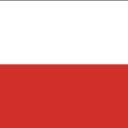The Netia Ethernet solution is based on a symmetrical link, which will ensure high connection stability for your company. As part of it, you also gain the highest level of connection security.
High scalability of the service and simultaneous simplicity of managing data transmitted through it thanks to the use of a uniform Ethernet protocol.
Netia Ethernet is fully managed by Netia - so your IT team does not have to deal with the administration of the WAN network and network devices, which frees up more time for other projects.
All branches in one network
Netia Ethernet is a service that connects your company's branches into one network and ensures high quality data transmission between them.
The service’s topologies:
The Netia Ethernet service can be implemented in various topologies depending on the Customer's needs.
Point-to-Point topology
It is characterized by the fact that each physical port in the Customer's branch has its counterpart in the form of a physical Ethernet port located in its headquarters. These are independent Ethernet data transmission channels. Each of these channels can be characterized by different parameters, and any type of service can be used to build a solution.
Point-to-Multipoint topology
It is characterized by the fact that all physical ports from the company's branches converge on a single physical port in the customer's central location, in which individual relationships are distinguished thanks to the appropriate 802.1q tag (each relationship - from the point of view of the customer's central location - has an appropriate VLAN number).



 Polski
Polski